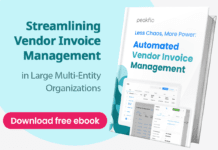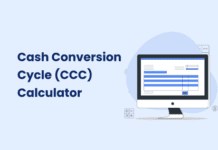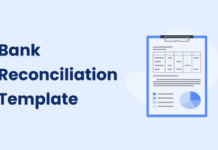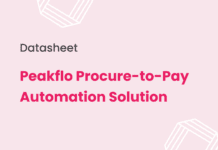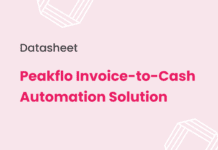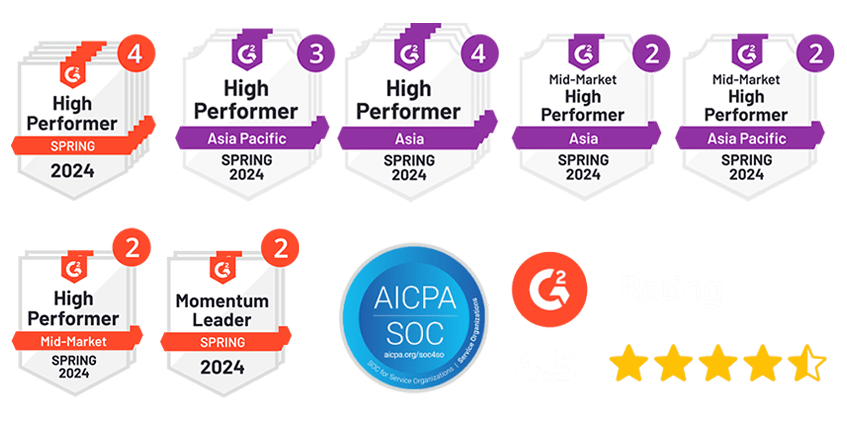What happens when a business does not have a clear picture of its finances? Payments get delayed, budgets spiral out of control, and decision-making feels like guesswork. It is a common struggle for many businesses in Singapore, whether you are a local vendor or a growing supplier. That is why financial reporting matters.
It is more than just numbers on a page—it is the foundation for running a smooth and successful business. When done right, financial reporting helps you stay on top of cash flow, spot opportunities, and show customers, vendors, and investors that you’re in control.
In this blog, we will walk you through the basics of financial reporting and explain why it is critical for your business. Whether you are new to the concept or want to sharpen your approach, this guide will make it simple and practical to get started.
What is Financial Reporting?
Financial reporting is the process of sharing a company’s financial details in a clear and organized way. It explains how much money the business earns, spends, and saves over a specific period, like a quarter or a year. These reports help show a business’s financial health in simple terms.
Suppose you own a small manufacturing business in Singapore. You plan to expand by purchasing new machinery, which costs $100,000. To fund this, you approach a local bank for a loan. The bank asks for your financial reports to check if your business can manage the repayments.
Here is a snapshot of your financial information from the past year:
| Financial Item | Amount (SGD) |
| Total Revenue | 500,000 |
| Cost of Goods Sold (COGS) | 300,000 |
| Gross Profit | 200,000 |
| Operating Expenses | 120,000 |
| Net Profit | 80,000 |
| Current Cash Reserves | 30,000 |
| Monthly Loan Repayment | 2,500 |
Here are the key insights from financial reporting
- Profitability: Your net profit is $80,000, showing the business is profitable. This reassures the bank that you generate enough income to cover loan repayments.
- Loan Feasibility: The loan requires monthly repayments of $2,500 (approx. $30,000 annually). Comparing this to your net profit, the bank sees you can manage repayments while covering other expenses.
- Cash Reserves: Your cash reserves of $30,000 add a safety net. Regulators also review this to ensure your business has enough liquidity to handle emergencies.
Benefits of Accurate Financial Reporting
Understanding your business’s financial health is impossible without proper financial reporting. It is also a key part of making smart decisions that can help your company grow. Here is how financial reporting can benefit your business:
- Keeps You on Top of Your Finances
Financial reporting helps you track income, expenses, and overall performance. It is essential for managing debts and allocating budgets. By reviewing financial statements, you get a clear picture of cash flow, profits, and capital. Plus, if there are any errors or unusual entries, you can catch and fix them before they become serious problems.
- Helps You Stay Compliant
Every business needs to comply with corporate tax laws and financial regulations. Financial reporting makes this easier by organizing the data required for taxes and audits. This saves time and ensures your business avoids penalties.
- Compares Plans with Reality
Financial reporting lets you compare your budget with actual results. If you notice that expenses are higher than expected or profits are lower, you can adjust plans to stay on track. This comparison keeps your finances aligned with your goals.
- Encourages Transparency Within the Business
When financial data is easy to access, teams and leaders can work more efficiently. Transparent reports ensure that everyone—from employees to managers—has access to the same information. Open financial reporting also builds trust with stakeholders and potential investors by showcasing the business’s performance honestly.
- Guides Smart Decisions and Future Planning
Financial reporting provides the data needed to identify areas where spending might be too high. It also helps with more accurately forecasting future budgets. This ensures that resources are used efficiently and decisions are backed by solid numbers.
By prioritizing financial reporting, you are not just following the rules—you are giving your business the tools it needs to thrive.
Understanding the Different Types of Financial Reports
Financial statements are simple summaries that explain how a company is doing financially. They are the main part of financial reporting and show important details about the company’s performance. Each statement focuses on a specific area, like how much the company owns, earns, or spends. Together, they give a complete picture of the business.
With modern accounting tools, the detailed numbers behind these statements can also be turned into dashboards. These dashboards make it easy to see trends and make quick decisions. The most important types of financial statements and dashboards used in reporting include:
1. Balance Sheet
A balance sheet provides a snapshot of a company’s finances at a specific moment. It lists what the business owns (assets), what it owes (liabilities), and what’s left for the owners or shareholders (equity). This document helps you understand whether the company is financially secure or needs to address any gaps.
2. Income Statement (Profit and Loss Statement)
The income statement also called the profit and loss statement, shows how much money the business made or lost during a certain period. It highlights revenue and expenses, breaking down where money is coming from and where it’s going. In the end, it reveals the net income, also known as the bottom line.
3. Cash Flow Statement
A cash flow statement explains how money moves in and out of the business over time. It separates cash activities into operations, investments, and financing. This report shows whether the company has enough cash to pay its bills, reinvest, or grow. It is a practical way to see if a business is managing its money well.
The equity statement outlines how much money owners and shareholders have invested in the business. For large companies, this is usually a separate report, but smaller businesses may combine it with their balance sheet. This document is essential for understanding how ownership and investments contribute to the company’s value.
5. CFO Dashboard
The CFO dashboard is a tool for senior finance officers. It gives an at-a-glance view of key financial data, such as working capital, accounts payable and receivable, credit use, payroll, and budget performance. This dashboard helps decision-makers quickly identify trends and act on important financial insights.
6. Statement of Changes in Equity
This report is especially useful for investors. It shows equity updates that are not included in the balance sheet or income statement. For example, it tracks new investments, dividends paid, or changes in ownership. This extra detail gives a clearer picture of the company’s overall financial activity.
Key Stakeholders Who Depend on Financial Reports
Financial reports are important tools that help different groups make better decisions. Here’s a closer look at who uses them and how:
- Shareholders, Investors, and Creditors
Shareholders and investors check financial reports to see if a company is making a profit. This helps them decide whether to keep their shares, invest more money, or sell. Creditors, like banks, use these reports to see if the company can repay its debts. They use this information to decide whether to give loans or extend more credit.
- Managers
Managers rely on financial reports to run the business. These reports show how well the company is doing and help managers make important decisions. For example, they may use the data to adjust budgets, reduce costs, or plan for new projects. Financial reports help managers track progress and plan for the future.
- Customers
Some customers, especially in business partnerships, review financial reports before making decisions. These reports show whether the company is stable and reliable. If the company has a strong economic record, customers feel more confident working with them.
- Employees
Employees and unions can use financial reports to understand the company’s success. If the business is making a profit, it may mean better job security and fair wages. These reports also help employees see how the company plans to grow and stay competitive in the future.
- Regulators
Regulatory authorities check financial reports to ensure that a company is following the law. They use these reports to confirm that taxes, accounting rules, and other regulations are being followed. This protects everyone by keeping businesses honest and transparent.
Best Practices to Improve Financial Reporting
Improving financial reporting is not just about following rules—it is about making life easier for everyone who depends on the numbers. Let us break it down into three key areas that can make a big difference, especially with the help of finance automation tools:
1. Getting the Numbers Right, On Time
Accurate and timely financial reports are the backbone of good decisions. Suppose you are trying to plan for your business with outdated or incorrect data—it is like flying blind. That is why it is so important to double-check numbers and reduce manual work where mistakes can creep in. Tools that catch errors early and streamline data entry are a huge help. And when reports are ready on time, you and your stakeholders can act quickly without second-guessing the numbers.
2. Using Automation to Work Smarter, Not Harder
Manual reporting is a hassle. Automation changes the game by handling repetitive tasks and giving you real-time insights. Think about how much time you could save if your data from different systems came together in one clear dashboard. Automation does exactly that. It not only makes the process faster but also reduces errors. Plus, these tools can flag issues for compliance, so you’re not constantly worried about meeting standards.
3. Staying Compliant and Keeping Everyone in the Loop
Compliance sounds complicated, but it does not have to be. Automated tools can take the stress out of meeting regulations by identifying problems before they escalate. And let us not forget about communication—everyone from managers to vendors to regulators needs to be on the same page. Sharing clear, reliable financial data builds trust and keeps things running smoothly. It is about making sure everyone has the information they need when they need it.
By focusing on accuracy, embracing automation, and improving communication, financial reporting becomes more than just a task—it becomes a tool for growth and trust. These steps are not just about numbers; they are about making your work easier and your decisions stronger.
How Peakflo Modernizes Financial Reporting for Singapore Businesses?
Peakflo changes the way businesses handle financial reporting. It replaces old, manual processes with a faster, smarter system. Here is what it can do:
Real-Time Receivables Insights
- The AI dashboard shows live updates on receivables, overdue balances, and cash flow.
- It automatically tracks Days Sales Outstanding (DSO), doubtful debts, outstanding amounts, and aging balances.
- Disputed invoices are flagged in real-time so that they can be resolved quickly.
Real-Time Payables Insights
- With the payables dashboard, monitor actions pending, wallet balance, and your company’s summary of spend.
- Check all the pending bill creations and approvals from the actions pending section.
- Track the aging payables of your customers in real-time.
Smarter Payment Management
- The AI system predicts when customers will pay based on their past behavior.
- It assigns risk levels (High, Medium, Low) to help prioritize follow-ups.
- Alerts are sent immediately if a customer’s payment habits change.
- You can track invoice statuses without using spreadsheets, saving time and effort.
- Tracks reminders sent through SMS, WhatsApp, and email and shows open rates and reasons for bounces, so you know what works.
Clear Budget Control
- Peakflo tracks budgets for departments and projects in real-time.
- Alerts are sent when budgets reach 50%, 80%, 90%, or 100% of their limit.
- Detailed reports show how budgets are being spent and allocated.
- It makes it easy to see which budgets are fully used and which are still open.
Cash Flow Analytics
- Understand the cash flow health of your company through an easy visualization of the total amount billed and collected each month.
- With Peakflo’s AI-powered analytics, easily predict your cash flow
- Collection cohort analysis provides deeper insights into company-wide collection efficiency by tracking how long it took for each month’s invoices to be collected.
Team Activity Reports
- Get a quick overview of your team’s collection process
- Easily understand the amount collected by each payment collections team member
- Keep track of skipped and pending actions for better task management
- Custom reports can be created without any manual effort.
Conclusion
Financial reporting is how businesses share their financial information with people who need it. External stakeholders, like regulators, investors, lenders, and future shareholders, rely on these reports. They use the information to understand how the company is doing today and what might happen in the future.
Internal financial reporting is a bit different. It is more flexible and helps managers make decisions. These reports give them the details they need to plan, solve problems, and improve the business’s performance. Both types of reporting are important for keeping a company on track and building trust with others.
By using Peakflo, businesses in Singapore can move away from spreadsheets and outdated systems. It helps save time, reduces mistakes, and gives a better view of your finances. With these tools, managing finances becomes much easier and more efficient.
Take Control of Your Financial Reporting Today! Discover how Peakflo can simplify and enhance your financial reporting process. Book a demo now and see it in action!









![Why AI Sales Calls Are Making Good Sales Reps Even Better [2025 Guide] ai sales calls](https://cdn-kmjmp.nitrocdn.com/YvtqmrsiHUxqerlSiZgbfzqqTARWTElr/assets/images/optimized/rev-834053b/blog.peakflo.co/wp-content/uploads/2025/09/65168cf6-3001-4733-8cbc-12d5684cf449-218x150.webp)







